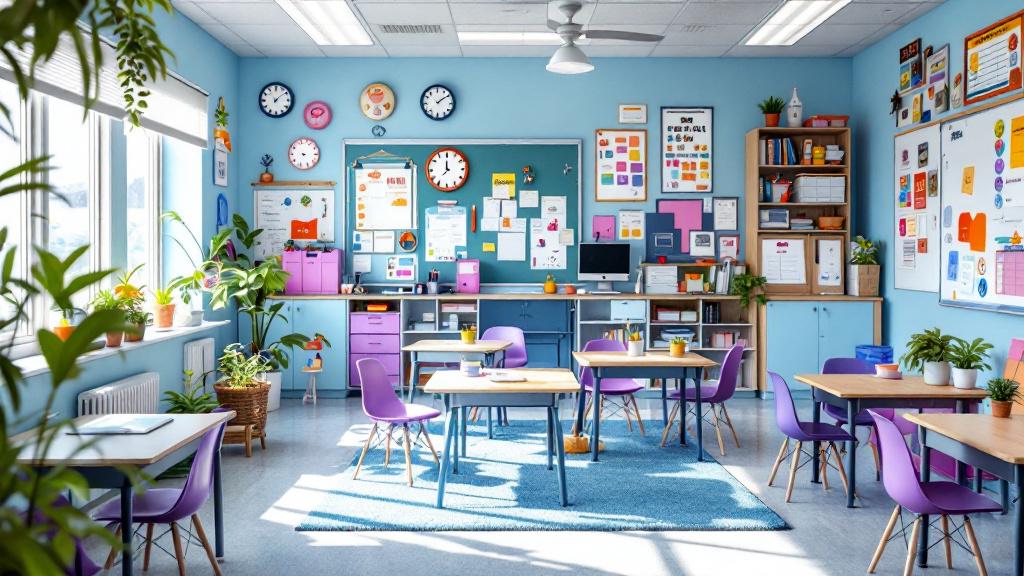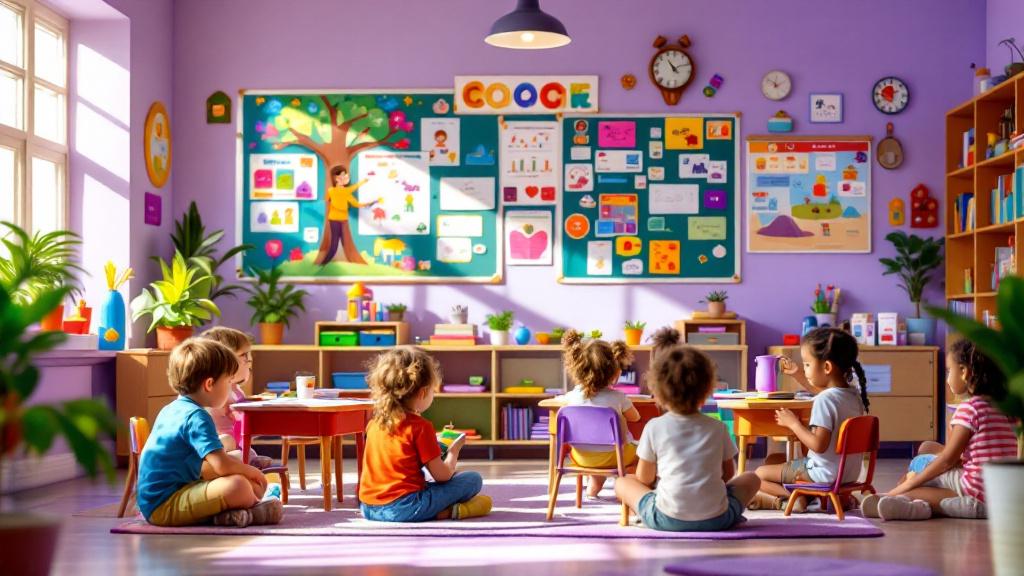Understanding the Scope of ABA Adaptations
Applied Behavior Analysis (ABA) is a versatile, evidence-based approach that supports individuals of all ages, from infancy to adulthood. This article explores how ABA therapy can be effectively adapted for different developmental stages, focusing on home-based settings, and highlights best practices, techniques, and the importance of individualized planning to maximize outcomes.
Early Childhood: Foundations for Lifelong Skills
What are the developmental milestones for ages 0-5?
During the early years, children typically reach several important developmental milestones that lay the foundation for future learning and social skills. These include developing basic communication abilities like babbling and simple words, forming initial social interactions, and gaining emotional regulation. Motor skills such as crawling, walking, and fine motor activities like grasping are also fundamental. Recognizing these milestones helps practitioners identify areas where children may need additional support or intervention, especially for children with developmental delays or autism.
How are play-based interventions used for children aged 0-5?
Play-based activities are central to ABA therapy for toddlers and preschoolers. Using puzzles, interactive games, and simple crafts helps develop cognitive, social, and communication skills in a natural, engaging manner. For instance, completing puzzles can improve problem-solving abilities, while role-playing games foster social interactions. These activities are tailored to each child's interests, making learning enjoyable and effective.
Why is natural environment teaching important?
Natural environment teaching involves integrating therapy into everyday routines and settings the child is familiar with, such as home, park, or preschool. This approach promotes generalization of skills, meaning children can successfully apply newly learned behaviors across different contexts. Routine activities like mealtime, playing, or dressing serve as natural teaching moments where children practice communication, social, and emotional skills in real-life situations.
What focus areas are most beneficial in early childhood ABA?
For children under five, ABA therapy emphasizes foundational communication skills, social interaction, and emotional regulation. Techniques such as positive reinforcement encourage desirable behaviors, while shaping and prompting help refine skills progressively. Early intervention often results in significant improvements in language, social skills, and daily living activities, providing children with strong tools for future development.
How does ABA therapy support children in this age group?
ABA therapy for toddlers and preschoolers is tailored to their developmental stage by using playful, engaging methods. These include structured play, modeling, and naturalistic teaching that align with typical developmental milestones. The goal is to support early communication, reduce problematic behaviors, and build social skills, setting the stage for smoother transitions into more structured learning environments like preschool.
Are there specific techniques suited for early childhood?
Yes, techniques such as video modeling, natural environment teaching, and visual schedules are especially effective. Video modeling allows children to observe desired behaviors, while visual schedules can help children anticipate routines and reduce anxiety about transitions. These methods are adaptable and often combined to create a comprehensive early intervention plan.
When is the ideal age to start ABA therapy?
The optimal window for beginning ABA therapy is between 2 and 6 years old, ideally before age 4. Early intervention leverages neuroplasticity, leading to better outcomes in language, social skills, and adaptive behaviors. Starting early provides a strong developmental foundation that benefits children throughout their lives.
How does ABA therapy evolve with age?
As children grow, ABA techniques are adapted to suit their developmental needs. For infants under 6 months, the focus is on naturalistic interaction and social bonding. For older children, approaches might shift toward academic skills, social confidence, and emotional regulation, using more structured activities like role-playing and problem-solving. In adolescence, ABA emphasizes independence and life skills.
What is the significance of routine and consistency?
Children, especially those with autism, thrive on predictable routines and consistency. Regular scheduling of therapy sessions helps children anticipate what will happen, reducing anxiety and increasing engagement. Visual cues and integrating therapy into daily routines reinforce skills and promote generalization.
How can parents support early ABA interventions?
Parents play a vital role by attending sessions, practicing techniques at home, and maintaining open communication with therapists. Consistent reinforcement of skills outside therapy sessions helps children retain and generalize what they learn. Flexibility in scheduling and involving family routines ensures that interventions are practical and sustainable.
What does the initial assessment involve?
The process begins with a comprehensive evaluation of the child's strengths and needs. This assessment forms the basis for creating individualized treatment plans, ensuring that therapy targets relevant skills and challenges. Data collection throughout therapy helps monitor progress and inform adjustments.
How are ABA techniques tailored across different ages?
For infants and toddlers, play-based and naturalistic methods are preferred. For school-aged children, interventions involve behavior chaining, video modeling, and structured activities aimed at improving communication and social skills. For teens, ABA focuses on life skills, independence, and social confidence through techniques like task analysis, reinforcement, and problem-solving exercises.
What are the benefits of early intervention?
Early ABA intervention can lead to significant improvements in language, daily living skills, and social behaviors. Research supports that starting therapy during the preschool years maximizes developmental gains, which often persist into adulthood, ultimately fostering greater independence.
How does individualization improve outcomes?
Customized ABA plans that consider each child's unique strengths, interests, and needs tend to be more effective. Tailoring activities and goals helps ensure skills are meaningful and retain relevance across different environments, encouraging generalization and long-term success.
| Age Group | Focus Areas | Typical Techniques | Goals |
|---|---|---|---|
| 0-5 years | Communication, social skills, emotional regulation | Play-based interventions, natural environment teaching | Building foundational skills for future development |
| 6-12 years | Academic readiness, social skills, emotional regulation | Role-playing, structured sports, musical activities | Enhancing communication, teamwork, and independence |
| 13-18 years | Life skills, social confidence, problem-solving | Task analysis, reinforcement, community activities | Fostering self-reliance, employment skills, independence |
Supporting School-Aged Children: Academic and Social Skills
How is ABA therapy adapted for children aged 6 to 12?
ABA therapy for children between 6 and 12 years old emphasizes a broad range of developmental skills. During this stage, focus is placed on preparing children academically, socially, and emotionally. This involves activities that foster communication, teamwork, and emotional regulation.
In practice, therapists often incorporate techniques such as behavior chaining, which teaches complex skills step-by-step, and video modeling, where children learn new behaviors by watching videos. Group activities like organized sports or musical sessions are used to enhance social interactions and cooperative skills.
Collaboration with teachers, caregivers, and other educators is crucial at this stage. Regular communication ensures the consistency of strategies across home and school environments. This teamwork helps tailor interventions that address each child's unique needs and promotes skill generalization across various settings.
What are some practical ways to implement ABA therapy at home for different age groups?
Implementing ABA therapy in a home setting depends on creating a structured, predictable environment. For children of all ages, using visual aids such as schedules or checklists helps reinforce routines and expectations, making transitions easier.
Reinforcement is vital. Parents should immediately praise or reward desirable behaviors with preferred activities or tangible incentives to encourage repetition.
Breaking down complex skills into small, manageable steps through task analysis makes learning more accessible. For example, teaching a child to brush teeth could involve steps like squeezing toothpaste, brushing, rinsing, and drying.
Natural environment teaching, which integrates skill practice into daily routines like meal prep or playtime, supports skill transfer. Regular data collection on the child's progress helps in adjusting strategies and tracking improvements.
Parents' collaboration with trained professionals like Board Certified Behavior Analysts (BCBAs) or Registered Behavior Technicians (RBTs) provides essential guidance, ensuring interventions are appropriate and effective.
Consistency, flexibility, and engaging activities aligned to a child's interests can significantly enhance the success of home-based ABA programs across different ages.
Additional Information
Research underscores that early and tailored ABA interventions can lead to notable improvements in language, social skills, and daily habits, extending positive effects into teenage and adult years. Incorporating naturalistic teaching methods, personalized strategies, and ongoing progress monitoring remains critical for optimizing outcomes.
Adapting ABA for Teenagers: Developing Independence and Life Skills
How can ABA therapy be adapted for different developmental stages?
Applied Behavior Analysis (ABA) therapy is versatile and can be customized to suit children and adolescents at various ages and developmental levels. For younger children, especially those under five, therapy emphasizes foundational skills like communication, social interaction, and emotional regulation through play-based activities and naturalistic teaching methods such as the Early Start Denver Model (ESDM). These approaches leverage natural routines like play and daily activities to promote learning in familiar contexts.
As children grow into school age (6-12 years), ABA shifts focus to academic readiness, social skills, and emotional regulation. Techniques such as behavior chaining, video modeling, and individualized strategies became essential parts of intervention, often involving collaborations with teachers and parents to maximize skill generalization across settings.
For teenagers (13-18 years), the therapy model pivots toward fostering independence and life skills. The primary focus areas include social confidence, emotional regulation, pre-employment training, and problem-solving. Interventions are tailored to help adolescents function more independently in daily life, work environments, and social situations.
Throughout all stages, continuous assessment is fundamental. Data collection and analysis guide adjustments in intervention strategies, ensuring each child’s needs are met. Delivery settings vary from home programs to community environments, with the goal of integrating learned skills into everyday routines. Parental involvement, peer training, and educator participation are important components for supporting sustained progress.
Focus on social confidence, emotional regulation, pre-employment skills
ABA techniques for teenagers aim to build social confidence, emotional regulation, and practical pre-employment skills. These programs often involve real-life practice in natural settings like homes, community centers, or workplaces. Activities focus on problem-solving, planning, and self-advocacy to foster independence.
Methods: task analysis, reinforcement, social skills training
Core ABA strategies used for adolescents include:
- Task Analysis: Breaking down complex skills into manageable steps, such as job interview processes or daily routines.
- Reinforcement: Using positive reinforcement to motivate and sustain desired behaviors, including social interactions or task completion.
- Social Skills Training: Role-playing, social stories, and group activities to enhance peer interactions.
Real-life practice in home and community settings
To ensure skills transfer, adolescents are encouraged to practice in real-world environments. For example, household chores or community service activities are incorporated into therapy plans, reinforcing independence and functional skills.
Fostering self-reliance and problem-solving
The ultimate goal is to foster self-reliance. Techniques such as task analysis facilitate learning step-by-step processes, while problem-solving exercises build resilience and adaptability.
| Developmental Focus | Techniques Used | Setting | Outcomes |
|---|---|---|---|
| Social Confidence | Social skills training, role-playing | School, community | Improved peer interactions |
| Emotional Regulation | Self-monitoring, reinforcement | Home, therapy sessions | Better mood regulation |
| Pre-Employment Skills | Task analysis, real-life practice | Community | Increased readiness for work |
| Self-Reliance | Problem-solving, independence tasks | All environments | Greater independence |
Research supports that early, tailored interventions significantly improve language, social, and daily living skills, with benefits extending into adulthood. Therefore, considering the individual child's interests, strengths, and developmental needs is vital for effective ABA therapy across all ages.
Behavioral Techniques: Customizing Interventions for Age-Appropriate Goals

What are some common ABA techniques like positive reinforcement, prompting, fading, and natural environment teaching?
Applied Behavior Analysis (ABA) utilizes a variety of techniques tailored to individual needs. Positive reinforcement involves rewarding desired behaviors to increase their frequency, such as praising a child for using words instead of gestures. Prompting provides hints or cues to assist a child in performing a target behavior, which are gradually reduced through fading to promote independent skill use.
Natural environment teaching is an approach that integrates learning into everyday routines and activities, making skills more functional. Video modeling, social skills training, and chaining are other techniques that help reinforce new behaviors effectively. Data collection is fundamental, allowing therapists to track progress and modify interventions accordingly.
How are these techniques adapted for different age groups?
The adaptation of ABA techniques varies significantly based on age and developmental level. For very young children (0-5 years), therapy emphasizes play-based activities and natural environment teaching to nurture foundational skills like communication and emotional regulation.
For school-age children (6-12 years), techniques such as behavior chaining, role-playing, and video modeling support academic and social skills. Fading prompts gradually enhances independence, while reinforcement is used to motivate engagement.
In teenagers (13-18 years), interventions focus on life skills, social confidence, and problem-solving. Techniques like task analysis break down complex skills into manageable steps, with reinforcement and social skills training fostering self-reliance.
How do these techniques promote generalization of skills across settings and routines?
Generalization—the transfer of learned skills to different environments and situations—is a key goal of ABA therapy. Using natural environment teaching helps embed skills within real-life contexts such as home, school, or community settings.
Consistent routines, visual schedules, and collaboration with caregivers ensure skills are reinforced across different routines. Scheduling therapy during natural routines helps children see the relevance of skills in various situations.
Balancing structured teaching with naturalistic approaches promotes spontaneous use of skills and increases the likelihood that they will be retained and used independently in everyday life.
| Technique | Age Group Focus | Practical Example | Goal |
|---|---|---|---|
| Positive Reinforcement | All ages, adapted for developmental level | Giving praise or tokens for completed tasks | Increase desired behaviors |
| Prompting & Fading | Younger children, school-aged, teenagers | Using cues to initiate a social interaction | Foster independence and skill mastery |
| Natural Environment Teaching | Mainly 0-12 years, applicable across ages | Incorporating learning into play or chores | Promote real-world application and transfer of skills |
| Behavior Chaining | School-aged and older children | Completing a sequence of tasks for self-care | Develop complex skill sequences |
| Video Modeling | School-aged children, teens | Watching videos of social interactions | Improve social understanding and behavior |
| Visual Schedules | Children of all ages, especially those with routine needs | Visual charts for daily tasks | Increase predictability and independence |
Can ABA therapy be used to help adults?
Yes, ABA therapy is effective for adults as well. Although it is most commonly associated with children, modern ABA practices extend to adult interventions for various needs.
In adults, ABA focuses on developing social skills, managing daily routines, vocational training, and reducing problematic behaviors. It is tailored to individual goals and circumstances, with assessments and personalized strategies designed to improve independence and quality of life.
Trained professionals, such as Board Certified Behavior Analysts (BCBAs), monitor progress, adjust plans, and work collaboratively with clients. The principles remain consistent—positive reinforcement, systematic instruction, and data-driven adjustments—ensuring flexible, respectful, and outcomes-oriented support.
Whether working on communication, daily living skills, or workplace behaviors, ABA's adaptability makes it a valuable tool well into adulthood.
The Role of Routine and Visual Supports in ABA Implementation

How important is scheduling therapy sessions at consistent times?
Consistency is crucial in ABA therapy, especially for children with autism and other developmental challenges. Regularly scheduled sessions help children develop a predictable routine, reducing anxiety and helping them anticipate therapy activities. It also reinforces learning by creating a stable environment where new skills can be consistently practiced.
Scheduling sessions at the same days and times allows children to establish expectations, which can improve focus and engagement during therapy. For younger children, predictable routines support their emerging understanding of daily structure, making transitions into more formal learning settings smoother.
How can visual schedules and cues be used effectively?
Visual supports are a core component of ABA therapy, especially for children who benefit from visual learning styles. Visual schedules display the sequence of daily activities and therapy sessions using pictures, symbols, or written words.
Using visual cues helps children understand what to expect, reduces stress related to transitions, and encourages independence. For example, a visual schedule might outline activities like play, learning, breaks, and therapy sessions. This clarity can reinforce routines, support emotional regulation, and promote adherence to schedules.
Visual supports extend beyond schedules. Prompting cues, visual timers, and social stories are also used to help children follow commands, manage time, and understand social interactions.
How does incorporating routine activities and natural environment teaching influence outcomes?
Integrating therapy into everyday routines and natural environments enhances skill generalization and real-world application. Natural environment teaching involves conducting therapy in typical settings, such as during mealtimes, play, or community outings, using ongoing activities as opportunities for learning.
For children aged 0-5, educational play and activities like puzzles or crafts are woven into daily routines to develop communication, social, and cognitive skills in a familiar context.
In school-aged children, routine activities like sports or musical sessions serve as platforms for practicing communication and teamwork. For teenagers, household tasks and community service projects promote independence and problem-solving skills.
This approach helps children apply learned behaviors in settings outside therapy, promoting lasting behavior change and skill retention.
Why is flexibility and adaptation to interruptions essential?
Despite careful planning, disruptions such as holidays, family events, or unforeseen schedules can occur. Flexibility ensures that ABA therapy remains effective despite these challenges.
Adjusting session times, rescheduling, or modifying activities to fit the new context helps maintain progress. Open communication between caregivers and therapists is vital for planning these adaptations.
For example, if a child is unwell or unable to attend a session, incorporating missed activities into future sessions prevents gaps in learning. Similarly, understanding when a child is most alert during the day allows scheduling at optimal times for maximum learning.
In essence, balancing routine with flexibility supports both consistency in learning and the child's overall well-being.
Integrating Parent and Caregiver Involvement for Enhanced Outcomes

Why is involving parents and caregivers crucial in ABA therapy?
In ABA therapy, the active participation of parents and caregivers plays a vital role in maximizing the child's progress. Engaged caregivers become essential partners, reinforcing skills learned during therapy sessions and helping to create a consistent environment for the child's development.
How can parents attend therapy sessions?
Parents attending therapy sessions provides them with direct insight into the methods, techniques, and goals being targeted. It also allows for real-time coaching by therapists, enabling caregivers to learn how to implement strategies effectively at home. This joint participation helps ensure that skills are generalized across settings and consistent routines are maintained.
Why is practicing skills at home and providing feedback important?
home practice reinforces learning and skill retention. When caregivers incorporate ABA techniques into daily routines—such as meal times, play, or chores—the child experiences consistent cues and encouragement. Providing feedback to therapists on what is working and where challenges occur allows for adjustments tailored to the child's evolving needs.
How does open communication with therapists support progress?
Transparent communication ensures that any difficulties or successes are promptly shared. Regular updates help therapists modify intervention strategies, address setbacks, and celebrate achievements. Maintaining an open dialogue also ensures that the therapy plan remains personalized and responsive.
What training do caregivers receive in ABA techniques?
Caregivers are often trained in specific ABA strategies such as positive reinforcement, prompting and fading, and natural environment teaching. This training equips them with practical skills to support their child's learning throughout the day, increasing the consistency and effectiveness of interventions.
Practical ways for families to be involved
| Activity | Description | Benefits |
|---|---|---|
| Attending sessions | Participating alongside professionals during therapy | Gain firsthand understanding and skill modeling |
| Practicing at home | Integrating techniques into daily routines | Reinforces skills and promotes generalization |
| Providing feedback | Sharing observations and concerns | Facilitates plan adjustments and tailored support |
| Receiving training | Learning ABA methods directly from therapists | Builds caregiver confidence and competence |
How involvement influences long-term success
A collaborative approach fosters a supportive environment beyond therapy sessions. Children tend to show greater improvements in communication, social interaction, and daily living skills when their caregivers are actively involved. It also empowers families to handle challenges independently, laying a foundation for sustained progress.
What about adults? Can ABA therapy be used to help them?
Yes, ABA therapy is adaptable for adults. It can assist in developing essential life skills, managing daily routines, reducing challenging behaviors, and improving social interactions. The core principles—positive reinforcement, systematic teaching, and data-driven adjustments—are relevant across all ages.
| Age Group | Focus Areas | Techniques Used | Special Considerations |
|---|---|---|---|
| Children 0-5 | Communication, emotional regulation | Play-based, natural environment teaching | Early intervention can lead to significant developmental gains |
| Children 6-12 | Academic skills, social skills, emotional regulation | Behavior chaining, video modeling | Collaboration with educators enhances learning |
| Adolescents 13-18 | Life skills, independence, social confidence | Task analysis, social skills training | Preparing for transition to adulthood |
| Adults | Daily living, vocational skills, social independence | Systematic instruction, reinforcement | Tailored to individual goals and needs |
These collaborative efforts underscore the importance of integrating parents and caregivers into every stage of ABA therapy. Their involvement not only accelerates learning but also ensures that children and even adults can achieve greater independence and quality of life.
Balancing Therapy with Family Routines and Flexibility in Scheduling

How can ABA therapy be adapted for different developmental stages?
ABA therapy is highly adaptable to children’s changing developmental needs across various ages. In early childhood, particularly for ages 0-5, therapy focuses on establishing foundational skills like communication, social interaction, and emotional regulation. Techniques such as play-based activities, natural environment teaching, and models like the Early Start Denver Model (ESDM) are used to foster these skills in familiar settings, making therapy engaging and relevant.
As children grow into school age (6-12 years), interventions evolve to include academic readiness, social skills, and emotional regulation. Strategies such as behavior chaining, video modeling, and group activities help build communication, teamwork, and daily living skills. For teenagers (13-18 years), the focus shifts toward developing independence, life skills, and social confidence. Techniques like task analysis, reinforcement, and social skills training prepare them for real-world situations, including pre-employment training and community involvement.
Different settings are used depending on the child's needs. Home-based ABA provides a comfortable environment where therapy can be seamlessly integrated into daily routines. Center-based programs offer a structured space with trained professionals, facilitating social interactions and skill acquisition. Often, a combination of both approaches yields the best outcomes, addressing multiple developmental areas.
Throughout all stages, ongoing assessment, data collection, and collaboration with caregivers, teachers, and peers are vital. Tailoring interventions to meet individual strengths and interests helps maximize learning outcomes and promote skill generalization across environments.
Monitoring child alertness and energy levels
Timing therapy sessions during periods when the child is most alert enhances engagement and learning. Recognizing signs of fatigue or overwhelm allows therapists and parents to schedule breaks or adjustments, ensuring that the child remains receptive to instruction.
Handling interruptions like holidays and family events
Holidays, vacations, or family gatherings can disrupt regular schedules. It’s important to plan ahead by discussing potential changes with therapists. Flexibility in scheduling, along with strategies like maintaining visual schedules and preparing the child for upcoming changes, help maintain continuity and reduce anxiety.
Adjusting session frequency and content
Therapy intensity can be modified based on progress and individual capacity. As skills improve, reducing session frequency can promote independence, while increasing frequency might be needed for new or challenging skills. Content should continually adapt to focus on emerging priorities, ensuring that therapy remains relevant and effective.
Maintaining routine and consistency
Children with autism often thrive on predictable routines. Consistent scheduling of therapy sessions offers stability and helps children anticipate and prepare mentally. Using visual schedules and incorporating therapy into natural routines like mealtimes, chores, or play enhances skill reinforcement in everyday contexts.
Balancing therapy with family routines and providing flexibility in scheduling
A balanced approach considers the family’s rhythm and lifestyle. Flexibility in appointment times, incorporating therapy into daily activities, and respecting family priorities foster a supportive environment. Open communication with therapists ensures that adjustments support the child's progress without causing undue stress.
By paying close attention to these factors—monitoring alertness, handling interruptions, tweaking frequency, and maintaining routines—parents and practitioners can create a responsive ABA plan. This approach not only promotes skill acquisition but also promotes comfort and stability, vital elements for meaningful progress.
Conclusion: Emphasizing Individualized, Lifelong Support
Why Is Ongoing Assessment Crucial in ABA Therapy?
Continuously evaluating a child's progress ensures that interventions remain effective and tailored to their evolving needs. Regular assessments help identify which strategies are working well and where adjustments are necessary, fostering a dynamic and responsive treatment plan.
In practice, therapists observe behaviors, gather data, and communicate with families and educators. This collaborative approach allows for timely modifications to therapy goals, ensuring continuous growth and development across all age groups.
How Important Is Collaboration Among Caregivers, Therapists, and Educational Staff?
Successful ABA therapy relies heavily on a team effort. Caregivers provide valuable insights into the child's daily routines and behaviors at home, while teachers and school staff support skill development in educational settings.
Regular communication and shared strategies between these groups promote consistency, which is essential for skill generalization. Family involvement—through attending sessions, practicing techniques, and providing feedback—further enhances therapy outcomes.
Why Is Flexibility and Ethical Practice Essential?
Every child is unique, and their needs may change over time. Therapists must remain flexible, adjusting session frequency, techniques, and goals as required.
Ethical considerations also guide practice, ensuring interventions respect the child's dignity, preferences, and cultural background. Balancing structured learning with the child's comfort helps foster motivation and reduces stress.
What Does the Future Hold for ABA Support?
Advances in research continue to refine ABA techniques, making them more personalized and effective. Technology, such as virtual sessions and app-based tracking, expands accessibility and convenience.
Furthermore, increasing recognition of ABA’s benefits encourages early and ongoing intervention, supporting a broad lifespan application. The integration of family-centered and holistic approaches is set to become standard, emphasizing the importance of lifelong support.
| Aspect | Focus Area | Details |
|---|---|---|
| Ongoing Assessment | Monitoring Progress | Regular data collection and review |
| Collaboration | Team Approach | Caregivers, educators, therapists |
| Flexibility | Adaptive Strategies | Adjusting methods to child’s needs |
| Ethical Practice | Respect & Dignity | Culturally sensitive, child-centered |
| Future Outlook | Innovations & Research | Technology, early intervention, lifelong strategies |
Is ABA therapy suitable for all age groups?
ABA therapy is suitable for individuals of all ages, from young children to adults. Although the specific techniques and goals vary depending on age, the core principles—such as positive reinforcement, individualized planning, and data-driven progress—remain consistent.
For young children, ABA often focuses on foundational skills like communication and social interaction, helping to build a strong developmental base. As children grow, therapy shifts to address more complex skills, such as emotional regulation, independent living, and social confidence.
In adolescence and adulthood, ABA continues to support independence, coping strategies, and social engagement. Therapists tailor interventions to the individual's needs and interests, ensuring relevance and motivation. This adaptability makes ABA a lifelong tool for fostering growth and well-being.
Overall, the flexibility and evidence-based nature of ABA allow it to support a wide range of developmental stages, making it an effective approach across the lifespan.
Emphasizing a Customized and Dynamic Approach
In summary, adapting ABA therapy for different age groups requires a thoughtful, individualized approach that considers developmental stages, environmental settings, and personal goals. Whether working with infants, children, adolescents, or adults, the core principles of ABA provide a flexible foundation for promoting meaningful skills and reducing challenging behaviors. Collaboration among families, therapists, educators, and community members is essential in creating a supportive, consistent, and engaging therapy environment. As research advances, so too will the strategies for tailoring ABA interventions to meet the evolving needs of individuals across their lifespan, ensuring that therapy remains effective, respectful, and empowering.
References
- ABA Therapy for Different Age Groups: A Guide for Parents
- A Guide to Creating Engaging ABA Activities for Children
- ABA Therapy Age Limits & Age Range Based on Evidence - Blue ABA
- Applied Behavior Analysis (ABA) | Autism Speaks
- Effective Home-Based ABA Therapy Scheduling Strategies for Parents
- Choosing Between Home-Based and Center-Based ABA
- Top ABA Therapy Techniques for Parents - Little Rays ABA
- ABA Therapy for Adults: Benefits and What to Expect





































































































